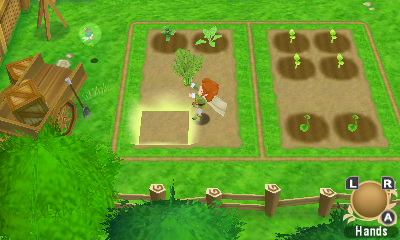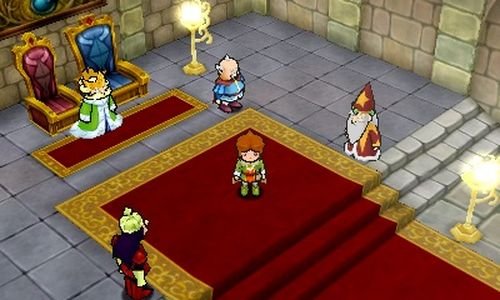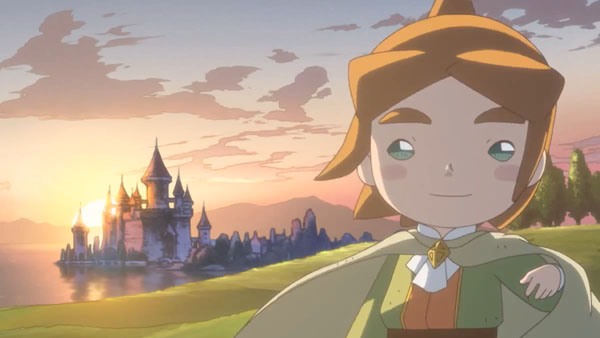Beautiful presentation; lovable cast; unique tone; engaging battle system; perfect implementation of farming and "dating"
Some players might be turned off by the lighter difficulty level and overall "cheery" tone of the game and its cast
Charming. That one word defined my entire experience of playing Return to PopoloCrois: A Story of Seasons Fairytale. Xseed has triumphantly returned the PopoloCrois brand to the West with this mashup of the Story of Seasons (formerly Harvest Moon) series. Melding traditional JRPG gameplay with farming elements from Story of Seasons, Return to PopoloCrois is a heartwarming title, eschewing a brooding, moody cast and somber storyline in favor of something more wholesome and cheery than is often seen in most video games. Certainly not all games, especially for those who play Nintendo and mobile titles, but the way that Return to PopoloCrois goes against the grain was refreshing to me, and joined with its beautiful production values, creative score, and fun gameplay, makes it a real standout on 3DS that I think the majority of players will greatly enjoy.
PopoloCrois is a manga series from 1978 by Yohsuke Tamori that revolves around the adventures of Prince Pietro. The story goes across a number of different periods in Pietro’s life, but Return to PopoloCrois is careful to keep the narrative accessible anyone who comes to play; it isn’t essential to be familiar with PopoloCrois, but it does add an extra layer of enjoyment for those who do. Essentially, Return to PopoloCrois starts players off on Pietro’s 13th birthday, and from there he learns about a grave threat in the form of the “black beasts” which are making land in his kingdom of PopoloCrois infertile and causing a food shortage. The young prince agrees to travel to a place called Galariland and find the secret to defeating the monsters, but winds up trapped there, instead, and forced to work the land on an abandoned farm as he attempts to restore the Four Farms of Light and save the day.

I’d like to stress that the key to Return to PopoloCrois‘s success isn’t because the story is brilliant (though it certainly is sound enough), but because it’s just so well-told. The game’s visual style evokes the art of the PopoloCrois manga quite well, but there’s also an unmistakable Studio Ghibli-esque flair on display that I couldn’t help but notice, too. The graphics aren’t the flashiest on the system, but they match the quaint tone of the game perfectly and truly enhance the narrative. The voice acting is also solid (there are two Japanese audio options for those interested), though if I had a gripe it’s that there’s some odd bouncing between spoken and unspoken dialogue interspersed throughout the adventure that could sometimes be distracting. Still, the quality of the audio, the visuals, and the gentle score that floats around in the background is simply sublime, coalescing into a fabulously fully-realized game world that sucked me right into Pietro’s quest.
There is certainly a decent amount of farming to be had in Return to PopoloCrois, but make no mistake, the Story of Seasons element of this game is more impactful from a thematic angle than a gameplay one. Farming here isn’t anywhere near as involved as it is in a traditional Harvest Moon game; there’s no day/night or season cycles to fret over, nor a stamina gauge to be concerned over. Instead, Pietro is able to plant crops and tend to animals without any of the traditional pressures of digital farming that Harvest Moon/Story of Seasons alumni are used to. That’s a good thing. Within the context of Return to PopoloCrois, this simpler approach to working the land and raising livestock fits perfectly, cutting right to the core of what makes Harvest Moon so enduring without straying too far into the more niche aspects of that series which could potentially bog down Pietro’s adventure. Farming here is treated largely as optional, serving as a nice break from the grind of battling; players will get as much out of it as they put in, and I was thrilled by its smart implementation.

The JRPG aspect of Return to PopoloCrois is handled equally as well as its farming, though it is undeniably at the forefront of the game more than farming. The battle system is something of a mix between standard turn-based combat and very light strategy elements. The strategy aspects come in the form of a field of movement grid that appears when a member of the player’s party has their turn to take action, as well as some attacks which also have similar grids that display their range of effect. These inclusions add some spice to an already simple-but-satisfying battle system by layering in obstacles to work around and finding the most beneficial ways to attack the enemy. Fights are random, but they never overstay their welcome, coming in bursts and always managing to feel varied and engaging. There are also “Pair Skills” to take advantage of, which allow party members to join together and execute powerful attacks and spells, further maximizing the fun of each battle (especially the more challenging boss engagements). For those who want to speed things up, there’s also the option to hit “Auto-Battle” and let the computer take over.
I’ve talked about the nuts and bolts of what makes Return to PopoloCrois a good game, but as I said at the start, what separates this RPG is how charming it is. Part of this stems from the cast; Pietro and company are warm and caring, and as the story unfurled, I became more and more drawn to all of them. It’s not that I never care about the cast in an RPG, but sometimes I can become apathetic toward characters when they feel like nothing but caricatures of ones I’ve seen a million times before. Thankfully, Tamori’s creations are as fresh and unique today as they were when they debuted so many decades ago. One element of the game that particularly sucked me into Pietro and his plight was the “dating” portion of the game. Narcia is Pietro’s one and only, but it wouldn’t be much of a Harvest Moon tie-in if there was no relationship building, so in an effort to please everyone, Return to PopoloCrois introduces a handful of maidens who the young prince can become friends with (note: platonic friends!). It plays out much like Harvest Moon/Story of Seasons veterans would expect, with copious gift-giving and conversations to engage in, and pulled me into the world of the game. It’s touches like this, as corny as they might seem to some players, that make Return to PopoloCrois such a great game.

Return to PopoloCrois is one of many excellent RPGs available for 3DS, but please don’t let this wealth of options allow it to get lost in the shuffle. Xseed has done an incredible job localizing this heartfelt adventure, introducing Prince Pietro and his world back to the West in an impressive way. I sincerely hope that this isn’t the last time I get to play one of Pietro’s adventures, and I can’t recommend enough that players go out and hunt down a copy of the game. Return to PopoloCrois is the sort of RPG that I wish there were more of; it’s fun, it’s accessible, and it doesn’t take itself too seriously.
Nintendojo was provided a copy of this game for review by a third party, though that does not affect our recommendation. For every review, Nintendojo uses a standard criteria.




 ShareThis
ShareThis






I really liked the PSP game when it came out. I will have to pick this up.